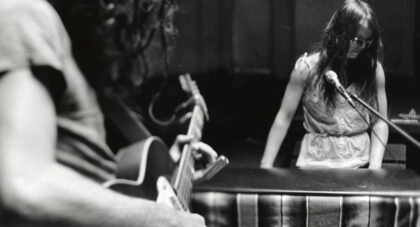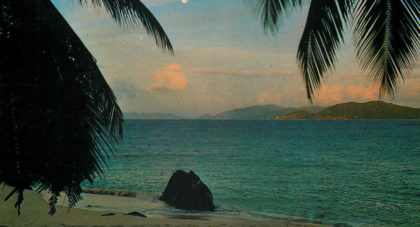On Kurt Vile's guitar epic "Bassackwards," a highlight from the Philadelphia singer/songwriter's newly released seventh album Bottle It In, Vile sings about "chilling out/but with a very drifting mind." That "drifting mind" is an illustration of Vile's particular duende. In conversation, as in his songs, he slides from place to place, idea to idea. He does so easily and without much stress.
Like a spacey Tom Petty, Vile writes the kind of songs that speak to just about anyone who's ever worn a pair of Levis or turned the radio up to better hear a guitar solo. No matter how cosmic his approach (and Bottle It In features some of his most out there jams to date, like the Mary Lattimore-assisted title song and creaking "Cold Was the Wind") Vile keeps a foot on the floorboard, connected to familiar reality in a way his favorite songwriters, including Randy Newman, John Prine, and Willie Nelson, might recognize. "Hey, hey look look at me, always been in touch with the world obviously," Vile sings on the thundering "Check Baby."
Recently, while in town for a brief press tour, Vile stopped by Aquarium Drunkard HQ to sit down with Justin Gage to discuss the record, recording with Dean Ween of Ween, the influence of Sonic Youth, working with Kim Gordon, and how collaborating with his "sister" Courtney Barnett helped shape the new album.
Aquarium Drunkard: So how long have you been in LA?
Kurt Vile: One and a half days.
AD: How do you like being on the West Coast?
Kurt Vile: I actually like it here a lot, I like recording here. I have a lot of friends here I like to record with. One of my old friends from Philly...Mary Lattimore, moved out here. I play with her a lot. But also Stella Mozgawa from Warpaint...I’m friends with all those girls. They’ve all been involved at some point, but [it's] mainly Stella I love to play with. Farmer Dave Scher from the Beachwood Sparks, and his great solo things. There are all kinds of people here I like to play with and record with.
Only the good shit. Aquarium Drunkard is powered by its patrons. Keep the servers humming and help us continue doing it by pledging your support.
To continue reading, become a member or log in.


